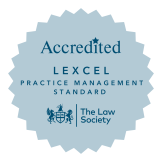Blog
Stamp Duty increase for investors and second homeowners
- Posted:
- 8 January 2025
- Time to read:
- 3 mins
Stamp Duty Land Tax (SDLT), the tax levied on property purchases, is set to see significant changes starting from 1 April 2025. These revisions are particularly important for those purchasing additional properties or considering buy-to-let investments, as the tax implications will be felt most acutely by this group.
Currently, SDLT for second homes and investment properties includes a higher tax rate compared to residential properties for primary use. However, the upcoming rate revisions will see higher tax costs, notably impacting mid-range property values, which many investors have focused their attention on.
For example, the SDLT rate on properties priced between £250,000 and £925,000 for second homes will rise from 3% to 5%. While this may seem like a modest increase, the effect on the overall transaction costs can be substantial. For instance, on a property purchase of £500,000, an investor will see an increase in SDLT from £15,000 (under current rates) to £25,000 (under the new rates) once these changes come into effect. As more investors target the buy-to-let market, these increased costs could affect their return on investment.
Current stamp duty rates for additional properties in England
Proportion of property value | Rates for additional properties |
| Up to £250,000 | 5% |
| £250,001 to £925,000 | 10% |
| £925,001 to £1.5 million | 15% |
| Over £1.5 million | 17% |
As of 1 April 2025, new rates will see an adjustment to this system, notably introducing a new tax band at £125,000, at which properties will incur a 7% SDLT rate.
Stamp duty rates for additional properties (effective 1 April 2025)
Proportion of property value | Rates for additional properties |
| Up to £125,000 | 5% |
| £125,001 to £250,000 | 7% |
| £250,001 to £925,000 | 10% |
| £925,001 to £1.5 million | 15% |
| Over £1.5 million | 17% |
This change will affect buyers of properties valued above the £125,000 threshold, adding a layer of financial complexity to the decision-making process.
Changes affecting first-time buyers
Although these updates primarily target second homes and investors, it is also important to note the impact on first-time buyers. The nil-rate threshold for first-time buyers will be reduced from £425,000 to £300,000. Additionally:
- The maximum property value eligible for first-time buyer relief will decrease from £625,000 to £500,000.
- Purchasers of properties exceeding this new threshold will face higher SDLT rates.
Though this shift mainly affects first-time buyers, it could also influence the demand for affordable homes within this bracket, potentially creating ripple effects across the wider market.
Planning ahead
Given the substantial changes that are set to take place, it is advisable for those interested in completing a property transaction soon to act promptly. The average property transaction takes between 8 and 12 weeks, sometimes even longer. Those looking to take advantage of the current SDLT rates should initiate the process as soon as possible.
Instructing a solicitor early in the process is strongly recommended to ensure smooth and timely completion of a property transaction before the rates change. We can assist with negotiating terms, liaising with sellers, and ensuring that all paperwork is completed on time, thus avoiding potential pitfalls as the new rates approach.
Need more information?
While we are not specialist tax advisors and cannot provide advice on the taxation implications of your transaction, we do recommend consulting a tax specialist if needed. For the latest guidance on SDLT rates or to use a stamp duty calculator, visit the UK Government website here.











